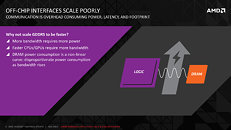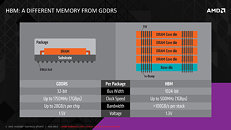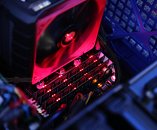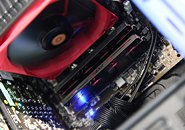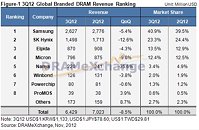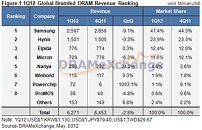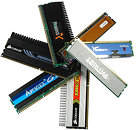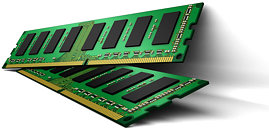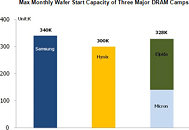Apr 13th, 2025 16:13 EDT
change timezone
Latest GPU Drivers
New Forum Posts
- What local LLM-s you use? (155)
- What is going to be your next tech upgrade? just curious :) (38)
- Dell Latitude 5420 - i7 1185G7 (5)
- What are you playing? (23377)
- Asrock z590 oc formula best cpu and memory speeds? (18)
- should global c-state be "enabled" instead of auto on am5 x3d processors? (25)
- [electronics] - STREAM DECK during gaming? (2)
- Upgrade for a GTX-1060 video card to a X570 AM4 MB w/ a Ryzen 9 3900X (17)
- Optical Disc Drive owners club (198)
- How to relubricate a fan and/or service a troublesome/noisy fan. (216)
Popular Reviews
- Thermaltake TR100 Review
- The Last Of Us Part 2 Performance Benchmark Review - 30 GPUs Compared
- TerraMaster F8 SSD Plus Review - Compact and quiet
- ASUS GeForce RTX 5080 TUF OC Review
- Zotac GeForce RTX 5070 Ti Amp Extreme Review
- ASRock Z890 Taichi OCF Review
- Sapphire Radeon RX 9070 XT Pulse Review
- Sapphire Radeon RX 9070 XT Nitro+ Review - Beating NVIDIA
- Upcoming Hardware Launches 2025 (Updated Apr 2025)
- AMD Ryzen 7 9800X3D Review - The Best Gaming Processor
Controversial News Posts
- NVIDIA GeForce RTX 5060 Ti 16 GB SKU Likely Launching at $499, According to Supply Chain Leak (181)
- MSI Doesn't Plan Radeon RX 9000 Series GPUs, Skips AMD RDNA 4 Generation Entirely (146)
- Microsoft Introduces Copilot for Gaming (124)
- NVIDIA Sends MSRP Numbers to Partners: GeForce RTX 5060 Ti 8 GB at $379, RTX 5060 Ti 16 GB at $429 (123)
- Nintendo Confirms That Switch 2 Joy-Cons Will Not Utilize Hall Effect Stick Technology (105)
- Over 200,000 Sold Radeon RX 9070 and RX 9070 XT GPUs? AMD Says No Number was Given (100)
- Nintendo Switch 2 Launches June 5 at $449.99 with New Hardware and Games (99)
- NVIDIA PhysX and Flow Made Fully Open-Source (77)
News Posts matching #Elpida
Return to Keyword Browsing
Micron Begins Shipping its First 20 nm-class GDDR5 DRAM Chips
Micron Technology announced during its Q3 FY-2015 earnings call, that it began shipping GDDR5 memory chips based on its 20 nm-class node. The company is reportedly shipping 8 Gb (1 gigabyte) GDDR5 memory chips. The company was last reported to be acquiring Japanese DRAM major Elpida, which also supplies GDDR5 chips to graphics cards, notebooks, and game console makers. The GDDR5 memory space has been saturated by companies such as Samsung and SK Hynix. The memory standard itself is on the brink of becoming obsolete; with AMD implementing HBM on its new high-end GPU, and NVIDIA expected to implement HBM with its upcoming "Pascal" GPU family. There is still quite a few GDDR5-equipped graphics cards to be sold, before HBM takes over GPUs of all market segments.

AMD "Fiji" HBM Implementation Detailed
Back in 2008, when it looked like NVIDIA owned the GPU market, and AMD seemed lagging behind on the performance and efficiency game, the company sprung a surprise. The company's RV770 silicon, the first GPU to implement GDDR5 memory, trounced NVIDIA's big and inefficient GeForce GTX 200 series, and threw AMD back in the game. GDDR5 helped the company double the memory bandwidth, with lower pin- and memory-chip counts, letting the company and its partners build graphics cards with fewer components, and earn great margins, which the company invested in development of its even better HD 5000 series, that pushed NVIDIA with its comical GeForce GTX 480, to hit its lowest ever in market-share. Could AMD be looking at a similar turnaround this summer?
Since the introduction of its Graphics CoreNext architecture in 2012, AMD has been rather laxed in its product development cycle. The company has come out with a new high-end silicon every 18-24 months, and adopted a strategy of cascading re-branding. The introduction of each new high-end silicon would relegate the existing high-end silicon to the performance segment re-branded, and the existing performance-segment silicon to mid-range, re-branded. While the company could lay out its upcoming Radeon R9 series much in the same way, with the introduction of essentially just one new silicon, "Fiji," it could just prove enough for the company. Much like RV770, "Fiji" is about to bring something that could prove to be a very big feature to the consumer graphics market, stacked high-bandwidth memory (HBM).
Since the introduction of its Graphics CoreNext architecture in 2012, AMD has been rather laxed in its product development cycle. The company has come out with a new high-end silicon every 18-24 months, and adopted a strategy of cascading re-branding. The introduction of each new high-end silicon would relegate the existing high-end silicon to the performance segment re-branded, and the existing performance-segment silicon to mid-range, re-branded. While the company could lay out its upcoming Radeon R9 series much in the same way, with the introduction of essentially just one new silicon, "Fiji," it could just prove enough for the company. Much like RV770, "Fiji" is about to bring something that could prove to be a very big feature to the consumer graphics market, stacked high-bandwidth memory (HBM).

MSI Radeon R9 290 Series Gaming PCB Pictured
Here's the first picture of the PCB under the hood of MSI's Radeon R9 290X Gaming OC graphics card, which was unveiled in Japan, over the weekend, and which was detailed in a slightly older article. It turns out that MSI will use the same board design (including the back-plate) on both the R9 290X Gaming OC and the R9 290 Gaming OC, both of which have been put up for pre-order by Canadian e-tailer NCIX. The R9 290X Gaming OC is priced at $699 CAD including taxes (US $660); while the R9 290 Gaming OC is priced at $529.99 CAD including taxes (US $500).
The PCB itself is a slight variation of MSI on AMD's reference design. The layout is identical, but there are subtle differences in component choices MSI made. For example, it ditches Coiltronics-made chokes for MagicTech. Appears to use SK Hynix made memory chips (instead of Elpida on a vast majority of retail R9 290 series boards), etc. It also appears to retain dual-BIOS. According to NCIX, both cards will feature untouched memory clock speeds of 5.00 GHz, yielding memory bandwidth of 320 GB/s, but feature 5-7 percent overclocks on the GPU. The R9 290 Gaming OC features GPU clock speeds (possibly PowerTune boost) of up to 1000 MHz (vs. 948 MHz reference), while the R9 290X Gaming OC features 1040 MHz.
The PCB itself is a slight variation of MSI on AMD's reference design. The layout is identical, but there are subtle differences in component choices MSI made. For example, it ditches Coiltronics-made chokes for MagicTech. Appears to use SK Hynix made memory chips (instead of Elpida on a vast majority of retail R9 290 series boards), etc. It also appears to retain dual-BIOS. According to NCIX, both cards will feature untouched memory clock speeds of 5.00 GHz, yielding memory bandwidth of 320 GB/s, but feature 5-7 percent overclocks on the GPU. The R9 290 Gaming OC features GPU clock speeds (possibly PowerTune boost) of up to 1000 MHz (vs. 948 MHz reference), while the R9 290X Gaming OC features 1040 MHz.

Micron Technology Reports Results for the Fourth Quarter of Fiscal 2013
Micron Technology, Inc., today announced results of operations for its fourth quarter and 2013 fiscal year, which ended August 29, 2013. For the fourth quarter, the company had net income attributable to Micron shareholders of $1.71 billion, or $1.51 per diluted share, on net sales of $2.8 billion. The results for the fourth quarter of fiscal 2013 compare to net income of $43 million, or $0.04 per diluted share, on net sales of $2.3 billion for the third quarter of fiscal 2013, and a net loss of $243 million, or ($0.24) per diluted share, on net sales of $2.0 billion for the fourth quarter of fiscal 2012.
For the 2013 fiscal year, the company had net income attributable to Micron shareholders of $1.19 billion, or $1.13 per diluted share, on net sales of $9.1 billion. Cash flows from operations were $1.8 billion for fiscal 2013. The results for fiscal 2013 compare to a net loss of $1.03 billion, or ($1.04) per diluted share, on net sales of $8.2 billion for the 2012 fiscal year.
For the 2013 fiscal year, the company had net income attributable to Micron shareholders of $1.19 billion, or $1.13 per diluted share, on net sales of $9.1 billion. Cash flows from operations were $1.8 billion for fiscal 2013. The results for fiscal 2013 compare to a net loss of $1.03 billion, or ($1.04) per diluted share, on net sales of $8.2 billion for the 2012 fiscal year.

Micron Announces The Finalization Of Elpida Takeover
Micron Technology, Inc. (Nasdaq:MU) ("Micron") and Elpida Memory, Inc. ("Elpida") trustees announced today the closing of Micron's acquisition of 100 percent of Elpida's equity, pursuant to a Sponsor Agreement entered into on July 2, 2012 in connection with Elpida's corporate reorganization proceedings conducted under the jurisdiction of the Tokyo District Court. In a related transaction, Micron also announced today the completion of its acquisition of a 24 percent share of Rexchip Electronics Corporation from Powerchip Technology Corporation and certain of its affiliates. The transactions will be recorded for accounting purposes as being effective at 11:59 p.m., Tokyo time, on July 31, 2013.
Elpida's assets include a 300 millimeter (mm) DRAM fabrication facility located in Hiroshima, Japan; an approximate 65 percent ownership interest in Rexchip, whose assets include a 300mm DRAM fabrication facility located in Taiwan; and a 100 percent ownership interest in Akita Elpida Memory, Inc., whose assets include an assembly and test facility located in Akita, Japan. Together with the Rexchip shares acquired from Powerchip, Micron will control approximately 89 percent of Rexchip's outstanding shares and 100 percent of Rexchip product supply. The manufacturing assets of Elpida and Rexchip together can produce more than 185,000 300mm wafers per month, which represents an approximate 45 percent increase in Micron's current manufacturing capacity.
Elpida's assets include a 300 millimeter (mm) DRAM fabrication facility located in Hiroshima, Japan; an approximate 65 percent ownership interest in Rexchip, whose assets include a 300mm DRAM fabrication facility located in Taiwan; and a 100 percent ownership interest in Akita Elpida Memory, Inc., whose assets include an assembly and test facility located in Akita, Japan. Together with the Rexchip shares acquired from Powerchip, Micron will control approximately 89 percent of Rexchip's outstanding shares and 100 percent of Rexchip product supply. The manufacturing assets of Elpida and Rexchip together can produce more than 185,000 300mm wafers per month, which represents an approximate 45 percent increase in Micron's current manufacturing capacity.
New Avexir Memory Modules Put Up A Lightshow
Avexir memory modules always caught our eyes at tradeshows for being extremely 'boutique' in their approach to the market. Not that we're complaining. They didn't disappoint this time either, showing off some colorful, shiny, and glowy modules of many shapes and sizes. The first kind below are Core Gold, with tops that light up gold, which should go well with ASUS' mainline Z87 motherboards, and ECS' Golden Boards. These modules are available at speeds ranging all the way from PC3-10600 (DDR3-1333) to PC3-22400 (DDR3-2800), in 4 GB and 8 GB densities, and in single-, dual-, and quad-channel kits. Some of these ship with two XMP profiles.
Moving on, the next kind are Platinum Red. These black beauties lack headspreaders, use high-grade Elpida-made DRAM chips, and feature pairs of tiny red LEDs lining the top portions on one of their sides. These modules are available in speeds ranging from PC3-10600 to PC3-12800 (DDR3-1600), and are available in the same densities and packages as the Core series. There are plenty of motherboards that look good with black and red. Next up, are the same modules with glowy heatspreaders on. These heatspreaders pack an acrylic bar that disperse light from these LEDs, and look awesome when installed. The last exhibit is an example of just how far Avexir will go to live up to its boutique reputation. It shows modules with tiny fluorescent lamps lining the top, which work at low voltages, probably using external power. Starting a florescent lamp takes additional circuitry, and you can find that in the picture.
Moving on, the next kind are Platinum Red. These black beauties lack headspreaders, use high-grade Elpida-made DRAM chips, and feature pairs of tiny red LEDs lining the top portions on one of their sides. These modules are available in speeds ranging from PC3-10600 to PC3-12800 (DDR3-1600), and are available in the same densities and packages as the Core series. There are plenty of motherboards that look good with black and red. Next up, are the same modules with glowy heatspreaders on. These heatspreaders pack an acrylic bar that disperse light from these LEDs, and look awesome when installed. The last exhibit is an example of just how far Avexir will go to live up to its boutique reputation. It shows modules with tiny fluorescent lamps lining the top, which work at low voltages, probably using external power. Starting a florescent lamp takes additional circuitry, and you can find that in the picture.

Micron and Elpida Announce Clearance of Transaction by Japan Fair Trade Commission
Micron Technology, Inc. (Nasdaq:MU) ("Micron") and Elpida Memory, Inc. ("Elpida") today announced that the Japan Fair Trade Commission has cleared Micron's previously announced acquisition of Elpida. Clearance under Japan's Act on Prohibition of Private Monopolization and Maintenance of Fair Trade (Act No. 54 of April 14, 1947) satisfies one of the conditions necessary for consummation of the transaction. The transaction has also cleared premerger review in the United States, Czech Republic and Korea.
The closing of the transaction remains subject to other conditions-including approval by Elpida creditors, the Tokyo District Court and regulatory approvals in other countries-and is expected to be completed in the first half of calendar 2013. Elpida's proposed reorganization plan was submitted to the Tokyo District Court on Aug. 21, 2012, and the Tokyo District Court's approved the submission of Elpida's proposed reorganization plan to creditors on October 31, 2012.
The closing of the transaction remains subject to other conditions-including approval by Elpida creditors, the Tokyo District Court and regulatory approvals in other countries-and is expected to be completed in the first half of calendar 2013. Elpida's proposed reorganization plan was submitted to the Tokyo District Court on Aug. 21, 2012, and the Tokyo District Court's approved the submission of Elpida's proposed reorganization plan to creditors on October 31, 2012.

Micron Technology, Inc., Reports Results for the First Quarter of Fiscal 2013
Micron Technology, Inc., (NASDAQ: MU) today announced results of operations for its first quarter of fiscal 2013, which ended November 29, 2012. For the first quarter, the company had a net loss attributable to Micron shareholders of $275 million, or $0.27 per diluted share, on net sales of $1.8 billion. The results for the first quarter of fiscal 2013 compare to a net loss of $243 million, or $0.24 per diluted share, on net sales of $2.0 billion for the fourth quarter of fiscal 2012, and a net loss of $187 million, or $0.19 per diluted share, on net sales of $2.1 billion for the first quarter of fiscal 2012.
Revenues from sales of NAND Flash products were 4 percent lower in the first quarter of fiscal 2013 compared to the fourth quarter of fiscal 2012, due to a 9 percent decrease in sales volume, partially offset by a 5 percent increase in average selling prices. Trade NAND Flash sales volume in the first quarter of fiscal 2013 decreased compared to the fourth quarter of fiscal 2012 primarily as a result of lower production of NAND Flash products. Revenues from sales of DRAM products in the first quarter of fiscal 2013 were 9 percent lower compared to the fourth quarter of fiscal 2012 primarily due to an 11 percent decrease in average selling prices. Sales of NOR Flash products were relatively unchanged for the first quarter of fiscal 2013 compared to the fourth quarter of fiscal 2012.
Revenues from sales of NAND Flash products were 4 percent lower in the first quarter of fiscal 2013 compared to the fourth quarter of fiscal 2012, due to a 9 percent decrease in sales volume, partially offset by a 5 percent increase in average selling prices. Trade NAND Flash sales volume in the first quarter of fiscal 2013 decreased compared to the fourth quarter of fiscal 2012 primarily as a result of lower production of NAND Flash products. Revenues from sales of DRAM products in the first quarter of fiscal 2013 were 9 percent lower compared to the fourth quarter of fiscal 2012 primarily due to an 11 percent decrease in average selling prices. Sales of NOR Flash products were relatively unchanged for the first quarter of fiscal 2013 compared to the fourth quarter of fiscal 2012.
DRAM Spot Prices Increase in November
According to DRAMeXchange, a division of global research firm TrendForce, as forecast in a previous report, DRAM contract price showed signs of stabilization in November; the previous US$1 to $2 monthly decline is narrowing, and DDR3 4 GB contract price is holding at the US$15 mark. TrendForce expects the contract price trend will only show a slight decrease in December, and may even stay flat for the month.
As spot market prices fluctuate more than contract prices, the spot market is often a good indicator of future DRAM prices. This week the spot market is seeing increased activity; DDR2 and 2 Gb eTT and DDR2 prices have increased by 1.24% and 1.09%, respectively. Top-tier memory makers began quietly building inventory in October, and spot market buyers seem to be following suit, providing an opportunity for a price rebound. TrendForce believes the DRAM spot price uptrend is due prior capacity cuts taking effect as well as strong entry-level tablet, or "Mobile Internet Device", shipments in China.
As spot market prices fluctuate more than contract prices, the spot market is often a good indicator of future DRAM prices. This week the spot market is seeing increased activity; DDR2 and 2 Gb eTT and DDR2 prices have increased by 1.24% and 1.09%, respectively. Top-tier memory makers began quietly building inventory in October, and spot market buyers seem to be following suit, providing an opportunity for a price rebound. TrendForce believes the DRAM spot price uptrend is due prior capacity cuts taking effect as well as strong entry-level tablet, or "Mobile Internet Device", shipments in China.
DRAM Price Decline Results in 8.5% QoQ Decrease in DRAM Industry Value
According to DRAMeXchange, a research division of TrendForce, as PC shipments are continually adjusted downwards and yearly growth has decreased by 5% YoY, demand for the peak season is not as strong as expected and the oversupply situation continues to worsen. As a result, contract price for 2 Gb chips fell by 22.5% in the third quarter, from US$1.11 in July to US$0.86 in September. Server and mobile DRAM are also showing falling price trends, resulting in an 8.5% drop in the value of the DRAM industry compared to the previous quarter; DRAM suppliers' revenues are falling across the board. However, looking at third quarter demand, with strong shipments for mobile devices like smartphones and tablet PCs, mobile DRAM accounted for 25% of total DRAM output, a significant increase from less than 20% in the second quarter. Consequently, market share is on the rise for memory makers with higher mobile DRAM ratios, like Samsung and Elpida. For the DRAM industry, improving core competitiveness lies in proper product adjustment, the key to profitability with such bleak market conditions.
DRAM Production Cuts Take Effect, Likely to Lead to a Rebound for DRAM Prices
According to DRAMeXchange, a research division of TrendForce, given the persistent oversupply situation in the global DRAM market, along with the -5% YoY shipment growth for PCs, October contract prices have dropped below $16 USD, and are continuing to approach the $15 USD mark. The trends pose as yet another test to the cost structures of DRAM makers. With prices approaching or dropping below cash cost, manufacturers are faced with the option of either undergoing production cuts or shifting their focus towards non-DRAM products.
Other than ProMOS, which chose to quit the DRAM market due to financial woes, manufacturers like Elpida and Rexchip have taken the initiative to lower their output levels in August. Powerchip, beginning September, took a similar initiative by adjusting P3 wafer levels, whereas in the following month, Nanya and Inotera made the official announcement to implement 20% production cuts. For the South Korean DRAM manufacturers, whose cost structures appear to be superior to those of other competitors, no production cuts have been announced nor taken, although efforts to control output ratios have been intensified. At the same time that production of commodity DRAM is being lowered, an increasing amount of emphasis is being placed on the production of the more profitable mobile and server DRAMs.
Other than ProMOS, which chose to quit the DRAM market due to financial woes, manufacturers like Elpida and Rexchip have taken the initiative to lower their output levels in August. Powerchip, beginning September, took a similar initiative by adjusting P3 wafer levels, whereas in the following month, Nanya and Inotera made the official announcement to implement 20% production cuts. For the South Korean DRAM manufacturers, whose cost structures appear to be superior to those of other competitors, no production cuts have been announced nor taken, although efforts to control output ratios have been intensified. At the same time that production of commodity DRAM is being lowered, an increasing amount of emphasis is being placed on the production of the more profitable mobile and server DRAMs.
Intellectual Ventures Resolves Patent Disputes with SK Hynix and Elpida
Intellectual Ventures (IV) announced today that it has reached settlement agreements with SK hynix Inc. and Elpida Memory, Inc. and resolved all pending patent infringement litigation with both companies.
"Intellectual Ventures has reached amicable settlements with both SK hynix and Elpida in the three patent infringement actions we filed against the companies over the past two years," said Melissa Finocchio, vice president and chief litigation counsel for Intellectual Ventures. "IV has built a world-class portfolio of semiconductor patents, and our preference is to sign license agreements and form productive, long-standing relationships with innovative companies rather than to litigate."
"Intellectual Ventures has reached amicable settlements with both SK hynix and Elpida in the three patent infringement actions we filed against the companies over the past two years," said Melissa Finocchio, vice president and chief litigation counsel for Intellectual Ventures. "IV has built a world-class portfolio of semiconductor patents, and our preference is to sign license agreements and form productive, long-standing relationships with innovative companies rather than to litigate."

Micron and Elpida Announce Sponsor Agreement
Micron Technology, Inc., and Elpida Memory, Inc.'s ("Elpida") trustees announced today that the parties have signed a definitive sponsor agreement for Micron to acquire and support Elpida. The agreement has been entered into in connection with Elpida's corporate reorganization proceedings conducted under the jurisdiction of the Tokyo District Court.
Under the agreement, 200 billion Yen (approximately USD $2.5 billion assuming 80 Yen/USD) total consideration, less certain reorganization proceeding expenses, will be used to satisfy the reorganization claims of Elpida's secured and unsecured creditors. Micron will acquire 100 percent of the equity of Elpida for 60 billion Yen (approximately USD $750 million) to be paid in cash at closing. In addition, 140 billion Yen (approximately USD $1.75 billion) in future annual installment payments through 2019 will be paid from cash flow generated from Micron's payment for foundry services provided by Elpida, as a Micron subsidiary. As a result of these payments, all pre-petition debt obligations of Elpida will be fully discharged under the corporate reorganization proceedings. The agreement also calls for Micron to provide certain financing support for Elpida capital expenditures, subject to specified conditions, and to maintain Elpida's operations and employees.
Under the agreement, 200 billion Yen (approximately USD $2.5 billion assuming 80 Yen/USD) total consideration, less certain reorganization proceeding expenses, will be used to satisfy the reorganization claims of Elpida's secured and unsecured creditors. Micron will acquire 100 percent of the equity of Elpida for 60 billion Yen (approximately USD $750 million) to be paid in cash at closing. In addition, 140 billion Yen (approximately USD $1.75 billion) in future annual installment payments through 2019 will be paid from cash flow generated from Micron's payment for foundry services provided by Elpida, as a Micron subsidiary. As a result of these payments, all pre-petition debt obligations of Elpida will be fully discharged under the corporate reorganization proceedings. The agreement also calls for Micron to provide certain financing support for Elpida capital expenditures, subject to specified conditions, and to maintain Elpida's operations and employees.

Micron Emerges as Front-Runner To Buy Out Elpida
Following a rapid turn of events, Micron Technology has emerged as a front-runner in the race to buy out ailing Japanese DRAM major Elpida. Elpida revealed Micron as the winner of the second round of bidding for the right to negotiate exclusively to buy it. DRAMeXchange predicts that Micron may offer up to 300 billion JPY (US $3.75 billion) for the deal, and the Micron+Elpida combine that emerges out of the deal, with its DRAM capacity, could bring about a revolutionary change in the industry.
The Elpida buyout, according to market analysts at TrendForce, will give Micron the capability to compete with Korean DRAM heavyweights SK Hynix and Samsung Electronics, in high-volume DRAM manufacturing. Elpida has been known for investments in DRAM R&D, and isn't behind the two Korean companies in terms of volume manufacturing. Its 30 nm-class DRAM yield-rate is nearly mature, while the next-generation 25 nm process is in testing phase.
The Elpida buyout, according to market analysts at TrendForce, will give Micron the capability to compete with Korean DRAM heavyweights SK Hynix and Samsung Electronics, in high-volume DRAM manufacturing. Elpida has been known for investments in DRAM R&D, and isn't behind the two Korean companies in terms of volume manufacturing. Its 30 nm-class DRAM yield-rate is nearly mature, while the next-generation 25 nm process is in testing phase.

SK Hynix Drops Out Of Race To Acquire Elpida
Japanese DRAM maker Elpida has been reporting chronic financial problems since the beginning of 2012. It soon filed for bankruptcy, driving interest in competitors Toshiba, Global Foundries, Micron and Hynix (SK Hynix), to acquire it. Hynix has now reportedly withdrawn from the Elpida takeover bid. The withdrawal is likely due to its own financial situation. Hynix is not the first to withdraw from the bid, the first to drop out was Toshiba. With the two gone, Micron Technology is next in line, with a bid of US $1.4 billion to buy out Elpida.
Worldwide Semiconductor Market Grew 3.7% in 2011 to $301 Billion
Worldwide semiconductor revenues increased more than 3.7% year over year to $301 billion in 2011, according to the latest version of the International Data Corporation (IDC) Worldwide Semiconductor Applications Forecaster (SAF). The industry weathered the macroeconomic uncertainties in the U.S and Europe, the earthquake and tsunami in Japan, China's slow down in the second half of the year, and floods in Thailand. Meanwhile, device applications, such as smartphones, media tablets and e-readers, automotive infotainment, notebook PCs, datacenter servers, and wireless and wired communication infrastructure drove robust consumption of semiconductors.
IDC's SAF tracks more than 100 semiconductor companies. Over 40 of these companies experienced year-over-year revenue growth greater than 5%, while about the same number of companies saw their revenue decline by more than 5%.
IDC's SAF tracks more than 100 semiconductor companies. Over 40 of these companies experienced year-over-year revenue growth greater than 5%, while about the same number of companies saw their revenue decline by more than 5%.

Elpida's Rexchip Foundry Capacity Key to DRAM Pricing
Even as Elpida has filed for bankruptcy protection and is dealing with restructuring, its disposal of a subsidiary Taiwan-based DRAM foundry Rexchip will impact DRAM supply and pricing, sources told DigiTimes. Rexchip has a monthly foundry capacity of 800,000 12-inch wafers and uses 65,000 wafers currently. Elpida has just finished development of 25 nm DRAM technology, which gives it competitiveness over other DRAM majors, Samsung Electronics and SK-Hynix.
As analyzed in an older report, should Elpida's restructuring take a turn for the worse, leading to an exit from the DRAM industry, it could have huge consequences on the competitive environment of the industry. DigiTimes currently reports that DRAM prices are slowly, but surely creeping back up. DRAM contract prices for March have risen 5.7% on average, the prices of 4 GB DDR3 modules have gone as high as US $18.75, with average prices of $18.50.
As analyzed in an older report, should Elpida's restructuring take a turn for the worse, leading to an exit from the DRAM industry, it could have huge consequences on the competitive environment of the industry. DigiTimes currently reports that DRAM prices are slowly, but surely creeping back up. DRAM contract prices for March have risen 5.7% on average, the prices of 4 GB DDR3 modules have gone as high as US $18.75, with average prices of $18.50.

Elpida Issues Notice on Petition to Commence of Corporate Reorganization Proceedings
Elpida Memory, Inc. hereby announces that At the meeting of the board of directors held on February 27, 2012, we resolved to file a petition for the commencement of corporate reorganization proceedings and filed the same with the Tokyo District Court. As such petition was duly received on the same day and then the Court has immediately rendered the temporary restraining order to restrain any repayment, etc., the comprehensive prohibition order to prohibit any execution and the supervision and examination order, we hereby notify thereof as follows. In this connection, our consolidated subsidiary, Akita Elpida Memory, Inc., has simultaneously filed a petition for the commencement of corporate reorganization proceedings. For such information, please refer to the separate "Notice on Petition for Commencement of Corporate Reorganization Proceedings and Uncollectibility of Debts of Our Subsidiary".

Elpida's Exit from DRAM Industry Will Have Huge Consequences
In case Elpida is unable to repay its debts due in April and goes insolvent, marking its exit from the DRAM industry, the consequences for not just the DRAM industry, but also the PC industry as a whole, will be huge, note industry observers. On the 15th, Eplida released a statement on the assumed going concern in the company with regards to its debt situation. The company has been unable to recover from its condition despite injections of capital backed by no less than the Japanese government.
Elpida has to repay nearly 40 billion JPY US ($505.8 million) to the government, and another 80 billion JPY (US $1.02 billion) in short-term bank loans. Frantic negotiates are on between the company and its long list of creditors that include the Japanese government and other banks to seek an interim relief from the default, even as the company searches for a cash-source that would alleviate the situation and make it survive. Elpida's situation is different from that of Qimonda, it's larger, has more technologies in the pipeline, and has recently set up 30 nm-class mass-production and is testing 20 nm-class production. In other words, it has much greater potential as a company that contributes to the industry, if it survives. Its exit will leave the industry imbalanced, and dominated by Korean DRAM makers such as Samsung and Hynix, and American Micron Technology, a step closer to oligarchical price-controls, observers note.
Elpida has to repay nearly 40 billion JPY US ($505.8 million) to the government, and another 80 billion JPY (US $1.02 billion) in short-term bank loans. Frantic negotiates are on between the company and its long list of creditors that include the Japanese government and other banks to seek an interim relief from the default, even as the company searches for a cash-source that would alleviate the situation and make it survive. Elpida's situation is different from that of Qimonda, it's larger, has more technologies in the pipeline, and has recently set up 30 nm-class mass-production and is testing 20 nm-class production. In other words, it has much greater potential as a company that contributes to the industry, if it survives. Its exit will leave the industry imbalanced, and dominated by Korean DRAM makers such as Samsung and Hynix, and American Micron Technology, a step closer to oligarchical price-controls, observers note.
DRAM Makers Cautiously Step Up Production
2011 was a bloodbath for the DRAM industry, as overproduction led to sharp drop in prices across the board, killing profit margins, and creating huge losses for DRAM makers. In Q4 2011, Elpida and Nanya cut back their production to prevent further drops in DRAM prices. As prices are now slowly stabilizing, DRAM makers are considering stepping up production cautiously, till "normalcy" in DRAM prices can be achieved.
DRAM makers cumulatively increased production by 100,000 wafers in Q1 2012, according to sources. These companies are walking a tight rope between ensuring they don't dampen demand, while ensuring they don't face further losses. This month, DRAM contact prices have gone up as PC OEMs placed fresh orders to replenish their memory inventories. The prices have reportedly gone up by 6% so far in this month. Meanwhile, the global supply of DRAM is expected to grow by 30% in 2012.
DRAM makers cumulatively increased production by 100,000 wafers in Q1 2012, according to sources. These companies are walking a tight rope between ensuring they don't dampen demand, while ensuring they don't face further losses. This month, DRAM contact prices have gone up as PC OEMs placed fresh orders to replenish their memory inventories. The prices have reportedly gone up by 6% so far in this month. Meanwhile, the global supply of DRAM is expected to grow by 30% in 2012.

Elpida Announces Note on Matters concerning the Assumed Going Concern
Elpida Memory, Inc. (Tokyo: 6665) ("Elpida") hereby announces that it has passed in its board of directors' meeting held today a resolution to add a note as set forth below regarding the matters concerning its assumed going concern in the Consolidated Financial Results for the Third Quarter ended December 31, 2011, and the Quarterly Report. The background that led Elpida to add the note is as set forth below.
Specifically, as of February 2, 2012, the date on which the "Consolidated Financial Results for the Third Quarter ended December 31, 2011" ("Financial Results") were released, Elpida took into account the progress of discussions with the relevant parties mentioned below and decided that there was no material uncertainty regarding its assumed going concern. Therefore, it did not include any note on the matters concerning the assumed going concern.
Specifically, as of February 2, 2012, the date on which the "Consolidated Financial Results for the Third Quarter ended December 31, 2011" ("Financial Results") were released, Elpida took into account the progress of discussions with the relevant parties mentioned below and decided that there was no material uncertainty regarding its assumed going concern. Therefore, it did not include any note on the matters concerning the assumed going concern.

Micron to Buy US $500M Worth Elpida Shares
Idaho-based Micron Technology is reportedly going to spend at least US $500 million in purchasing a stake in its Japanese rival, Elpida, according to a Economic Daily News report. This development closely follows reports of an equity tie-up between the two companies, with a decision emerging in February.
Taiwanese Nanya Technology and Inotera Memories stated in recent reports that DRAM makers should consider uniting their operations as such moves could contribute to the industry's sustainable development. Elpida refused to comment on this latest report. What does this mean to the consumer? The year 2011 has been a bloodbath for DRAM makers as overproduction led to drastic drops in PC memory prices, and a watershed for PC consumers as a result. These latest developments could contribute to the inevitable rebound of DRAM prices in 2012.
Taiwanese Nanya Technology and Inotera Memories stated in recent reports that DRAM makers should consider uniting their operations as such moves could contribute to the industry's sustainable development. Elpida refused to comment on this latest report. What does this mean to the consumer? The year 2011 has been a bloodbath for DRAM makers as overproduction led to drastic drops in PC memory prices, and a watershed for PC consumers as a result. These latest developments could contribute to the inevitable rebound of DRAM prices in 2012.

Elpida Memory Develops Resistance RAM Prototype
Elpida Memory, Inc. ("Elpida", TOKYO: 6665 JP), the world's third largest Dynamic Random Access Memory ("DRAM") manufacturer, today announced the development of its first-ever high-speed non-volatile resistance memory (ReRAM) prototype. As the ReRAM prototype was made using a 50-nanometer (nm[1]) process technology it has a memory cell array operation of 64 megabits[2], one of the highest densities possible for ReRAM. The prototype was jointly developed with the New Energy and Industrial Technology Development Organization (NEDO), a Japanese-funded public institution. Further work on ReRAM development is being conducted with Sharp Corporation ("Sharp", TOKYO: 6753 JP), the National Institute of Advanced Industrial Science and Technology (AIST, another Japanese public institution) and the University of Tokyo.
ReRAM (Resistance Random Access Memory) is next-generation semiconductor memory technology that uses material which changes resistance in response to changes in the electric voltage. This new type of non-volatile memory can store data even when the power supply is turned off. Its most attractive feature is that it can read/write data at high speeds using little voltage. While dynamic random-access memory (DRAM) is superior to existing non-volatile memory with respect to read/write speeds and endurance, DRAM quickly loses data when the power supply is removed. NAND flash memory, a leading example of nonvolatile memory, retains data even when the power is removed but has performance measures that are inferior to DRAM.
ReRAM (Resistance Random Access Memory) is next-generation semiconductor memory technology that uses material which changes resistance in response to changes in the electric voltage. This new type of non-volatile memory can store data even when the power supply is turned off. Its most attractive feature is that it can read/write data at high speeds using little voltage. While dynamic random-access memory (DRAM) is superior to existing non-volatile memory with respect to read/write speeds and endurance, DRAM quickly loses data when the power supply is removed. NAND flash memory, a leading example of nonvolatile memory, retains data even when the power is removed but has performance measures that are inferior to DRAM.
Micron, Elpida and Nanya Reportedly Having Merger Talks
According to a Japanese newspaper (Yomiuri), the country's last DRAM manufacturer, Elpida Memory, is fishing for a merger with two other memory companies, US-based Micron Technology and Taiwan's own Nanya Technology.
If it will go through, the merger would create a company better positioned in the memory market, and more capable of fighting South Korean companies like Samsung Electronics and Hynix Semiconductor.
While the company didn't comment on the merger talks, Elpida's President Yukio Sakamoto is said to have made a trip to the US last week to further negotiations with Micron. It's still uncertain how advanced are the talks but a deal could be signed this year.
If it will go through, the merger would create a company better positioned in the memory market, and more capable of fighting South Korean companies like Samsung Electronics and Hynix Semiconductor.
While the company didn't comment on the merger talks, Elpida's President Yukio Sakamoto is said to have made a trip to the US last week to further negotiations with Micron. It's still uncertain how advanced are the talks but a deal could be signed this year.
DRAM Suppliers: Oligopoly The Only Way Back To Profitability?
The random access memory market is a fiercely competitive one. Also, the yearly high PC shipment volume cycles of yesteryear are now history, pushing the various memory manufacturers into the red - and staying there. Well, it seems like Elpida is feeling the pinch more than most, because much of their debt has come from the Japanese government's recapitalization program and must be repaid by the end of April 2012. It looks like they can't pay this off so easily and due to this pressing deadline are looking for cash wherever they can get it, so it looks like merging with one of their rivals such as Toshiba or Micron might help them out of this predicament. Ultimately though, everyone in the DRAM market is hurting now, so it looks like fewer players are needed, so that they can work more like an oligopoly to return to profitability.
While great for helping them to survive, this isn't such good news for the end customer, who will end up seeing higher prices for their memory and a much slower decline in prices, if any. There's lots of detailed analysis and facts and figures over at X-bit labs.
While great for helping them to survive, this isn't such good news for the end customer, who will end up seeing higher prices for their memory and a much slower decline in prices, if any. There's lots of detailed analysis and facts and figures over at X-bit labs.
Apr 13th, 2025 16:13 EDT
change timezone
Latest GPU Drivers
New Forum Posts
- What local LLM-s you use? (155)
- What is going to be your next tech upgrade? just curious :) (38)
- Dell Latitude 5420 - i7 1185G7 (5)
- What are you playing? (23377)
- Asrock z590 oc formula best cpu and memory speeds? (18)
- should global c-state be "enabled" instead of auto on am5 x3d processors? (25)
- [electronics] - STREAM DECK during gaming? (2)
- Upgrade for a GTX-1060 video card to a X570 AM4 MB w/ a Ryzen 9 3900X (17)
- Optical Disc Drive owners club (198)
- How to relubricate a fan and/or service a troublesome/noisy fan. (216)
Popular Reviews
- Thermaltake TR100 Review
- The Last Of Us Part 2 Performance Benchmark Review - 30 GPUs Compared
- TerraMaster F8 SSD Plus Review - Compact and quiet
- ASUS GeForce RTX 5080 TUF OC Review
- Zotac GeForce RTX 5070 Ti Amp Extreme Review
- ASRock Z890 Taichi OCF Review
- Sapphire Radeon RX 9070 XT Pulse Review
- Sapphire Radeon RX 9070 XT Nitro+ Review - Beating NVIDIA
- Upcoming Hardware Launches 2025 (Updated Apr 2025)
- AMD Ryzen 7 9800X3D Review - The Best Gaming Processor
Controversial News Posts
- NVIDIA GeForce RTX 5060 Ti 16 GB SKU Likely Launching at $499, According to Supply Chain Leak (181)
- MSI Doesn't Plan Radeon RX 9000 Series GPUs, Skips AMD RDNA 4 Generation Entirely (146)
- Microsoft Introduces Copilot for Gaming (124)
- NVIDIA Sends MSRP Numbers to Partners: GeForce RTX 5060 Ti 8 GB at $379, RTX 5060 Ti 16 GB at $429 (123)
- Nintendo Confirms That Switch 2 Joy-Cons Will Not Utilize Hall Effect Stick Technology (105)
- Over 200,000 Sold Radeon RX 9070 and RX 9070 XT GPUs? AMD Says No Number was Given (100)
- Nintendo Switch 2 Launches June 5 at $449.99 with New Hardware and Games (99)
- NVIDIA PhysX and Flow Made Fully Open-Source (77)


